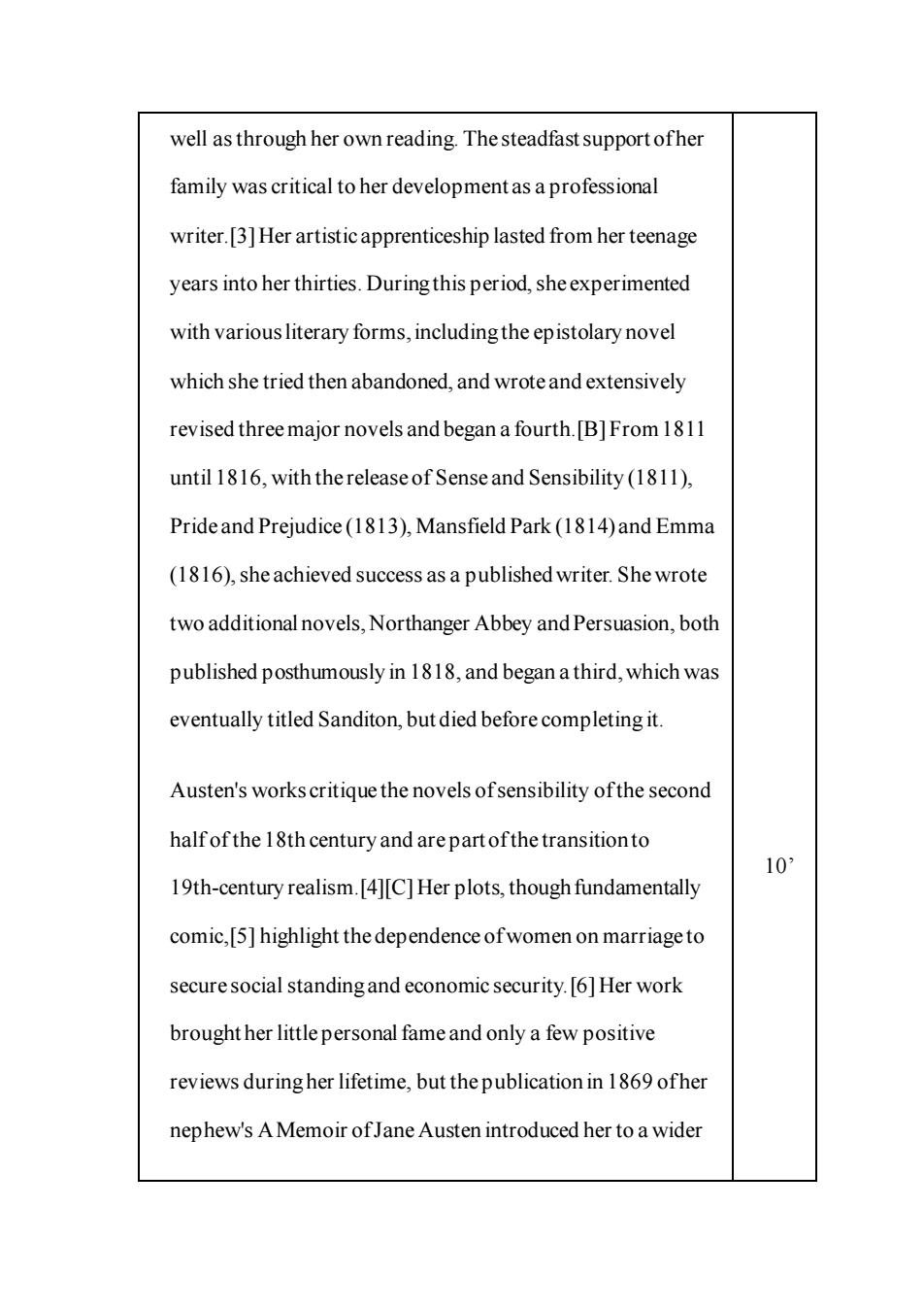正在加载图片...

well as through her own reading.The steadfast support ofher family was critical to her development as a professional writer.3]Her artisticapprenticeship lasted from her teenage years into her thirties.During this period,sheexperimented with various literary forms,including the epistolary novel which she tried then abandoned,and wroteand extensively revised three major novels and began a fourth.[B]From 1811 until 1816,with the release of Sense and Sensibility(1811), Prideand Prejudice(1813),Mansfield Park(1814)and Emma (1816),sheachieved success as a published writer.She wrote two additional novels,Northanger Abbey and Persuasion.both published posthumously beganathird,which was eventually titled Sanditon,but died before completing it. Austen's works critique the novels ofsensibility ofthe second half of the 18th century and are part ofthe transitionto 10 19th-century realism.[4][C]Her plots,though fundamentally comic,[5]highlight the dependence ofwomen on marriage to secure social standing and economic security.[6]Her work brought her little personal fame and only a few positive reviews duringher lifetime,but thepublication in 1869ofher nephew's A Memoir of Jane Austen introduced her to a wider well as through her own reading. The steadfast support of her family was critical to her development as a professional writer.[3]Her artistic apprenticeship lasted from her teenage years into her thirties. During this period, she experimented with various literary forms, including the epistolary novel which she tried then abandoned, and wrote and extensively revised three major novels and began a fourth.[B] From 1811 until 1816, with the release of Sense and Sensibility (1811), Pride and Prejudice (1813), Mansfield Park (1814) and Emma (1816), she achieved success as a published writer. She wrote two additional novels, Northanger Abbey and Persuasion, both published posthumously in 1818, and began a third, which was eventually titled Sanditon, but died before completing it. Austen's works critique the novels of sensibility of the second half of the 18th century and are part of the transition to 19th-century realism.[4][C]Her plots, though fundamentally comic,[5] highlight the dependence of women on marriage to secure social standing and economic security.[6]Her work brought her little personal fame and only a few positive reviews during her lifetime, but the publication in 1869 of her nephew's A Memoir of Jane Austen introduced her to a wider 10’